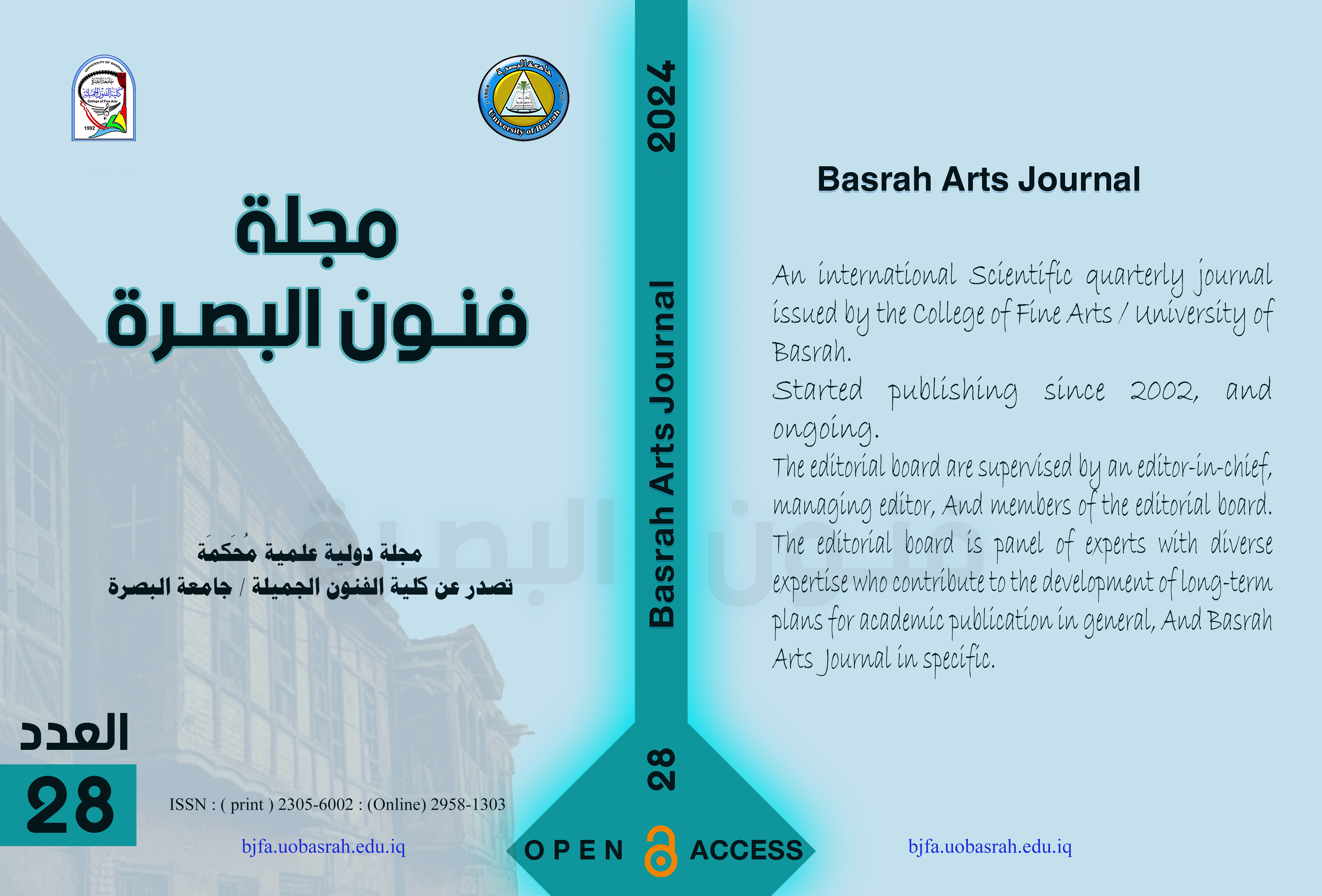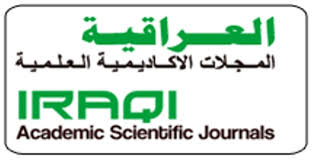Technical innovation in the art of hyper-realism
DOI:
https://doi.org/10.59767/2024.02/28.4Keywords:
Technical, innovation, hyper, realismAbstract
In the period following World War II, a postmodern period in which cultural activity increased and the creation of new characteristics and patterns of form in social and economic life and is no longer the old artistic pressure is dominant, but the media, technology and the market and called the community the term consumer or multinational capitalism emerged new movements, including the art of hyperrealism subject of research has included the first chapter of the research problem, which ended with the following question:(what is the property of technical renewal brought by excessive realism)The aim of the study was to know the renewal in the art of hyperrealism and the techniques used in the works of art, the limits of the research included models of the art of hyperrealism for the period(1969/1979) in Europe/ America. The second chapter included two sections, the first dealt with intellectual and cultural transformations and their impact on postmodern arts and the second came on two axes, the first; the points of difference between the original image and the imaginary image and its relationship to the art of hyperrealism, and the second: the artistic characteristics of hyperrealism and its artists. In the third chapter, the research procedures, where the descriptive approach was relied on to analyze the sample taken from the research community, which is a set of works that have been viewed through books and scientific sources and the selection of a sample representing the subject in an intentional manner amounted to 3 drawing works with the use of the observation tool and what was stated in the indicators for analysis. Keywords: renewal, technical, art, realism, excessive.
References
Abd Haider, N., Sahib, Z., & Muhammad, B. (2006). Studies in art and beauty. Jordan: Dar Majdalawi for publishing and Distribution.
Abdul-Masih, G. (1997). Dictionary of the Arabic language. Egypt: Dar Wahdan.
Abdulrida, E. A. (2016). The technique of making Super - realism sculptures by Local alternative materials. Al-Academy(75). doi:https://doi.org/10.35560/jcofarts75/5-22
Ahmed, J. M. (2014). Contemporary epistemology and postmodern constructivism. Algeria: Difference puplications.
Al -Bsiuni, M. (2006). Secrets of plastic art (Vol. 3). Caiiro: Alam Al- kutub for puplishing,distribution and printing.
Al- Hatmi, A. A. (2007). The conceptual and aesthetic dimensions of Dadaism and its reflections in postmodern art. Faculty of Fine Arts, 2. Babylon, Iraq.
Al- Wadi , A. S., & and his colleague. (2011). The marginalised's canine in postmodern art. Amman: Saffa House for Publishing and Distribution.
Al Wadi, A. S. (2011). Art criticism and aesthetic theorizing (Vol. 1). Babylon, Iraq: Dar Al- Sadiq Cultural Foundation.
Al- Wadi, A. S., & and his colleague. (n.d.). The marginalised in the art of postmodernism.
Al -wadi, A. S., & and his colleague. (n.d.). The marginaliseed in the art of postmodernism.
Al-Hattab , Q. (2013). In the philosophy of art and beauty.
Al-Jarjani, A. b. (n.d.). Dictionary of definitions. Cairo: The house of virtue.
Allam, N. I. (2001). The arts of the West in modern times. Cairo: DarAl- Maarif.
Alwan, F. K. (n.d.). Technical openness in the formation of post- modern pop art as a model. 8. Baghdad, Iraq: Academic magazine.
Attar, M. (2000). The horizon of plastic art on the eve of the twenty- first century. Cairo: Dar Al-shourouk.
Hassan , S. J. (2017). The constructive transformation of installation systems in the works of the artist Ali Al- Najjar. Academic magazine, p. 39.
Hassan, H. K. (2020). Iconography of visual text in contemporar global formation. Basrah, Iraq: Collage of Fine Arts / Drawing.
Jenzy, H. T. (2020). Body Transformations in Drawings the Artist Muhammed Mehraddin. Academy(95), pp. 143-160. doi:https://doi.org/10.35560/jcofarts95/143-160
Jordan, G. (2013). Philosophy of art: Introduction to aesthetics. (M. Younis , Trans.) Cairo: General Authority for Cultural Palaces.
Monroe, T. (2014). Development in the arts. Cairo: General Authority for Cultural Palaces.
Muslim, H. R. (2017). The allegorical structure of the image in postmodern formation. Master's thesis, 91. Faculty of Fine Arts - Drawing ABasrah: unpublished.
Newmeyer, S. (1960). In The story of modern art (R. Yunan, Trans., p. 12). Cairo: Anglo-Egyptian Library.
Obaidat , A. H., & and his colleagues. (2019). Interactions of artistic expression between photography and contemporary art. (12), p. 84.
Omar, A. (2008). ontmporary language dictionary. Cairo: The world of books for publishing,distribution and printing .
Ragheb, N. (without). Artistic criticism. Al- Fajala: maktabat misr.
S. A. (1990). The era of photo negatives and positives. Kuwait: National council for Culture ,Arts and Letters.
S. A. (2010). Art and strangeness. Cairo: Egyptian General Book Organisation.
Sahib, Z., & colleagues, a. h. (2004). Studies in art structure. Jordan: Al- Raed Scientific Library House.
Smith , E. L. (without). Artistic movements since 1945. Sharijah: Sharijah Center for Intellectual Creativity,Ministr of Information in the Goovernmentm of Sharija.
The fayruz Abadi , M.-D. M. (2005). The surrounding dictionary. Libanon: Al- Risala Foundation for printing and publishing.
The fayruz Abadi, M.-D. M. (2005). The surrounding dictionary. Libanon: Al- Risala Foundation for Printing and Publishing.
Downloads
Published
How to Cite
License
Copyright (c) 2024 ميعاد موسى حسن (مؤلف)

This work is licensed under a Creative Commons Attribution 4.0 International License.







